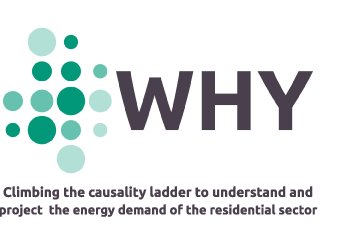WHY Toolkit
Deliverable 4.1
About this document
This deliverable presents the main results of applying the methodologies developed in WP2 and WP3
to develop tools of interest. In this sense, we present here the three different tools:
- A medium term load forecasting (MTLF) tool
- A model to assess the impact of a change of tariff
- An improved “standardised” load profiles
Section 2 deals with the explanation of the MTLF tool. This tool works taking into account an improved
version of the time series clusterization methodology created in Deliverable D2.1. This methodology
takes into consideration clusterization from different datasets and selects at the same time the number
of overall clusters as well as to identify the similar clusters between different datasets. 30 clusters were
selected following this methodology. Then, the clusters have been used to produce MTLF following
different algorithm principles:
- A naïve method.
- A random walk process.
- Standard load profiles.
- Different classification methods using a survey describing the time of use of certain actions.
- Different classification methods using a survey using socio-economic data.
- A comparison with a short term load forecast (STLF) method from the state of the art.
The results of the different methods show promising results of different methods to produce forecasts
from time series data and from different types of statistical data. Nevertheless, certain assessment have
not been finished and yet and cannot be provided:
- Only training errors are provided for the machine learning models. There is a new batch of answers received from an additional survey that will be used to test the generalisation and
- forecasting ability of the models.
- The results from the STLF experiment are not completed and thus cannot be provided.
- A proper discussion of the resulting models with respect to the state of the art and the potential
- use both in the project and by different practitioners is needed to be included.
- Section 3 presents the intervention level tool. This tool was designed to produce yearly load profiles
- after an intervention has been carried out. Several interventions have been considered such as:
- Different change of tariff (a Time of Use and a Price Signal),
- Different types of blackouts,
- Economic interventions.
A natural experiment has been carried out to produce relevant data for the change of tariff and results
of the experience will be provided in Deliverable D5.2 (energy cooperative use case). On the other
hand, surveys have been prepared to assess the other two and models will be provided for each one of
them in Deliverable D5.2 (PED use case) and Deliverable D5.3 (ethics assessment of results).
Finally, Section 4 shows the counterfactual level modelling. Here it is provided a discussion on how to
use the clusterization method produced in D2.1 as a relevant tool for desegregating the total energy
consumption of a year in the same fashion as standard load profiles from TSOs work. The results show
that the standardised load profiles are adjusted to aggregations of consumer loads and not individually
datasets, thus rendering them inaccurate for the proposed use of them. A proposal to use a different
standardised load profile with less error is proposed.




